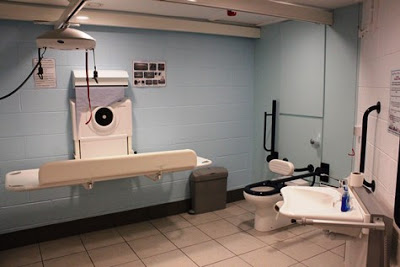Once you’ve made the decision to enter an marathon or endurance race of any kind, the same is true for all sports in general for that matter and that is don’t let all the hard work and effort be wasted by not staying adequately fueled and hydrated outside the gym or off the track.
We can only train as hard and as often as we can recover from! We all have an upper limit known as our maximal recoverable volume (MRV), which suggests how much quality work we can do and actually recover from to actually progress in our training. Can you do more in your training and improve? If yes great, but if you get worse then this is likely higher than your current MRV and you should look at decreasing the volume you’re doing and then look at how your training schedule is set-up and balances volume and intensity to see if there is any room for improvement, as well look into your nutritional protocol, hydration, sleep, recovery strategies, job commitments and current stress load all of which can chip away at the upper limit of our MRV. If any of these factors are sub-optimal then you can expect a decrease in training intensity and an ability to recover from training, which will impair training frequency and therefore overall results.
Try to have all the foundational factors in place for a consistent period of time before looking at advanced ways of improving as 99% of the time if you haven’t got the basics on your side the specific nutritional supplement (unless deficient) or training exercise variation won’t help you progress.
Now a few huge factors affecting our recovery from hard training such as:
- Ensuring we’re at least eating a calorie maintenance level of food (eating enough food to control our body weight and fuel all the additional exercise we’re doing to hold our weight static). It is a bad idea to use endurance events as a weight-loss method which many people do every year, I always seem to find clients at the gym who want help with their weight-loss goals and have already signed up to half and full marathons. What I suggest to my clients if they really want to train for an event is to be close to your goal weight before starting your training plan. This way we can enjoy the process of training and fuel accordingly for it and not worry about maintaining a calorie deficit to lose body weight, which will impact performance negatively as fatigue will be accumulated faster or your bodies ability to buffer fatigue will be diminished and if this is your first event/race the chances are you won’t be able to enjoy it and the whole experience will be a struggle. Probably making you feel like you never want to do it again and it was a horrendous ordeal, which isn’t what we want, we want people to enjoy exercise and want to come back and do it again with a high level of compliance. Now I’m not saying I’m against competing or entering races, I’m just emphasizing that getting fit enough to train for an event should be the goal and not jumping straight into the deep end.
- Next tip is to use your training sessions as practice for race days. What I mean by this is to practice how you plan to keep yourself hydrated and fueled throughout the race. In the closing stages of your training plan you should already know what you will be using on race day and be implementing it in your long training sessions. What you don’t want to happen is be trying a new strategy on race day and finding out you have an energy crash because you missed timed your carbs or failed to stay hydrated because you haven’t run in hot conditions etc. By the time you get to race day you should have a pretty good idea at what your strategy is and how you go about fueling and staying hydrated throughout the race, think about timings of fluids, electrolytes and carbs as well as being comfortable with the source you get your energy from, avoid sources that give you digestive complaints etc.
- Sleep is vitally important for our recovery from exercise, we estimate that the average person needs between 7-9 hours each night of good restful sleep, the pro’ have the luxury of being able to nap during the day as well which is great but not something we can expect to do. The more exercise you do, at higher frequency and intensities and the larger the individual the longer the likelihood you need to be sleeping, endurance activities have a large impact on systemic stress on the body requiring lot’s of nutrient demands and impacting the immune system quite hard and quite often athletes are picking up colds or flu at the latter end of the training cycle or after the event. Seriously you need to put sleep as high on the priority list as your training plan and nutrition strategy if you’re serious about performing well. Lastly remember that during the training we’re not improving our selves there and then, we’re just creating a stimulus for improvement what we then do around this depends if we will improve or not i.e. food and sleep/recovery.
A simple overview of a training/race day
Start to load carbohydrates in the night before and continue this through breakfast to ensure we have as much muscle glycogen as possible available to use during the race. Make sure you use carbs you know you get along with and avoid ones that cause bloating or gas, you want to avoid GI upset at all costs and be utilizing your food for fuel as much as possible, this goes for most days really not just race days.
Keep carbs in at each meal and time your meals around what time you plan to train/race. Have your last meal (small carbs based meal) around 60-90 minutes before you plan to set off and once your on the move as we can only store a limited amount of carbs in the form of glycogen, you will need a refueling strategy of around 30-90 grams of carbs per hour of exercise if the exercise is going to last more than 90 minutes. Find a product that you get along with and can consistently get good reliable results from. For shorter less intense runs you may want to keep the carb intake for the day on the lower end of the scale especially if you’re worried about weight gain as you may not need as much as you think you need, track body weight and calories to stay on top of this issue.
Stay hydrated; you don’t want to lose any more than 2-3% of your body weight during the course of your run as this can significantly impair your performance. Using electrolyte solutions can really help the hydration, as they are extremely useful when it comes to fluid absorption and retention within the muscles. After the training sessions aim to consume 150% of the water you may have lost through sweating to ensure adequate recovery.
If you are going on an extremely long run and plan on using caffeine in the race you should aim to do so here as it has been shown to improve performance and perception of fatigue, so you should aim to put this on the back end of your run as fatigue has accumulated but caffeine takes around 60 minutes to peak so don’t leave it to late also.
Post workout/run aim to replenish your carbohydrate in accordance with your level of expenditure within 30-60 minutes of finishing the exercise. If you train twice a day then multiple bouts of simple carbs are a good idea to restore muscle glycogen prior to your second training session.
Protein intake should also be a consideration; high protein diets for endurance athletes are incredibly important as we attempt to hold onto lean tissue mass (muscle mass), which is essential for maintaining performance. Aim for somewhere between 1.4-1.8 grams per kilo of protein a day, which can be spread equally across the day as there is no benefit to timing your protein intake or having it in large quantities at one meal.
Green leafy veg and fruit are good for mopping up a lot of the oxidative damaged occurred through strenuous exercise along with extra vitamin C supplementation. This can be done before bed away from exercise directly as it can interfere with the adaptation process of training which you want to have to ensure you keep progressing. Lastly magnesium oil is a good tool to have which can simply sprayed onto your legs before bed and can support the recovery process and potentially decrease DOMS.

Supplements
- Caffeine Stimulants
Caffeine has been repeatedly shown to improve performance by lowering your perception of effort by providing a boost just when you need it. When pushing yourself hard, your brain controls how fatigued you feel. Caffeine acts as a stimulant on the brain to lower your perception of effort, allowing you to keep pushing and maybe stretch yourself a little further. Caffeine takes roughly 60 minutes to peak so short runs or training sessions are unlikely to yield any benefits and best saved for the longer sessions.
This must be well balanced out with hydration and electrolytes and not solely rely on caffeine or stimulants to push you through your race. See bullet point on hydration.
- Energy and electrolytes during the race
This product contains an easily digestible supply of carbohydrate as well as electrolytes (such as sodium) that supports optimal hydration.
Both carbohydrate depletion and dehydration are two of the major causes of fatigue in endurance exercise. A common mistake made by endurance athletes is to consume too much or too little carbohydrate, causing lack of carbohydrate absorption or gastrointestinal problems.
In addition to ensuring optimal carbohydrate stores and hydration status before exercise, delivering additional carbohydrate and fluid during exercise is known to improve performance, race times and delay the onset of fatigue.
- Supporting your immune system post training
https://www.scienceinsport.com/uk/shop-by-sport/running/sis-immune-orange
Vitamin C and Iron are known to contribute to the maintenance of the normal function of the immune system during and after intense physical exercise. Heavy training is known to impact the immune system, suppressing it for 3‐72 hours post-training. This can lead to a higher incidence of upper respiratory tract Infections, impacting an athlete’s health and their ability to train.
Excessive antioxidants intake post training can suppress the training response. Look at how you can get adequate amounts of these nutrients in through your diet or via supplementation.
Consider a whey, casein or vegan protein powder to make hitting your protein target easier each day. A powder is quite simply a quick, easy and cost effective way of increasing protein intake daily. It can be very time consuming and expensive to eat 1.8 grams per kilo of bodyweight of steak or chicken every day for 7 days a week so if getting 25-30 grams a day from a powder makes it easier to achieve then it is certainly worth it.

References
1) Jeukendrup, A. (2014). A step towards personalized sports nutrition: carbohydrate intake during exercise. Sports Medicine, 44(1), 25-33.
2) Casa, D. J., DeMartini, J. K., Bergeron, M. F., Csillan, D., Eichner, E. R., Lopez, R. M. & Yeargin, S. W. (2015). National Athletic Trainers’ Association position statement: exertional heat illnesses. Journal of Athletic Training, 50(9), 986-1000.
3) Baker, L. B., & Jeukendrup, A. E. (2014). Optimal composition of fluid‐replacement beverages. Comprehensive Physiology, 4, 575-630
4) Impey, S. G., Hammond, K. M., Shepherd, S. O., Sharples, A. P., Stewart, C., Limb, M., … & Close, G. L. (2016). Fuel forthe work required: a practical approach to amalgamating train‐low paradigms for endurance athletes. Physiological reports, 4(10), e12803.
5) Thomas, D. T., Erdman, K. A., & Burke, L. M. (2016). Position of the academy of nutrition and dietetics, dietitians of canada, and the american college of sports medicine: Nutrition and athletic performance. Journal of the Academy of Nutrition and Dietetics, 116(3), 501-528.
To find out more great information follow the links below!
https://www.instagram.com/jamesrushnt/
https://www.facebook.com/jamesrushnt/
The post Supporting your marathon running training appeared first on talkhealth Blog.






